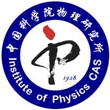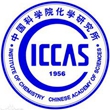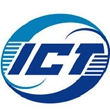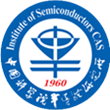Sessions 5:Information Sciences
Siegfried Selberherr
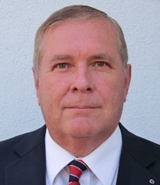
Character introduction
Professor Siegfried Selberherr was born in Klosterneuburg, Austria, in 1955. He received the degree of Diplomingenieur in electrical engineering and the doctoral degree in technical sciences from the Technische Universität Wien in 1978 and 1981, respectively. Dr. Selberherr has been holding the venia docendi on computer-aided design since 1984. Since 1988 he has been the Chair Professor of the Institut für Mikroelektronik. From 1998 to 2005 he served as Dean of the Fakultät für Elektrotechnik und Informationstechnik. Prof. Selberherr published more than 450 papers in journals and books, where more than 100 appeared in Transactions of the IEEE. He and his research teams achieved more than 1100 articles in conference proceedings of which more than 180 have been with an invited talk. Prof. Selberherr authored two books and co-edited more than 45 volumes, and he supervised, so far, more than 100 dissertations. His current research interests are modeling and simulation of problems for microelectronics engineering. Prof. Selberherr is a Fellow of the IEEE, a Fellow of the Academia Europaea, a Fellow of the European Academy of Science and Arts, and a Distinguished Lecturer of the IEEE Electron Devices Society.
Topic: Status and Future of Solid-State Non-Volatile Memory
Abstract Solid-state non-volatile memory was invented about forty years ago under the name electrically erasable programmable read-only memory (EEPROM). Since then a breathtaking development took place, which lead to the at present mostly utilized NAND-type flash memory, which revolutionized digital storage capabilities in form of USB memory sticks, memory cards, and solid-state drives. The worldwide market is about 16 billion US dollars this year and will more than double in the next three years. Scaling of semiconductor devices has been the main driving force ensuring the outstanding complexity and performance increase of any modern integrated circuits.
However, as the device scaling is showing signs of saturation, an introduction of new disruptive technological solutions for energy efficient storage and also computation becomes paramount. Various types of new concepts for future non-volatile memory structures are therefore intensely researched.
As the electron charge is fully employed in microelectronic circuits, another intrinsic electron’s property – the electron spin – attracts particularly much attention. The electron spin is characterized by the two well-defined projections on an axis and is therefore perfectly suited for digital applications. Similarly, the magnetization of the free recording layer can be parallel or anti-parallel to the magnetization of the fixed magnetic layer in a magnetic tunnel junction. The two relative magnetization configurations can be used to store binary data. As the two configurations feature different resistances, the stored data can be accessed electrically enabling spin-based non-volatile magnetoresistive memories. The relative magnetization configuration is manipulated by means of a spin-transfer or spin-orbit torque acting on the free layer. The torques are generated electrically by passing the current through the structure or through a heavy metal line under it. Purely electrically addressable spin-transfer torque and spin-orbit torque magnetoresistive memories are superior in many aspects compared to conventional flash memories. Magnetoresistive memory possesses a simple structure, long retention time, high endurance, and fast operation speed. It can be fabricated with a CMOS-friendly process and can thus also compete with DRAM and SRAM.
In addition, a combination of non-volatile elements with CMOS devices brings data processing close to the storage alleviating the data transfer bottleneck. Shifting data processing capabilities into the nonvolatile segment paves the way for a new low power and high-performance computing paradigm based on logic-in-memory and in-memory computing architectures, where the same nonvolatile elements are used to store and to process information.
However, as the device scaling is showing signs of saturation, an introduction of new disruptive technological solutions for energy efficient storage and also computation becomes paramount. Various types of new concepts for future non-volatile memory structures are therefore intensely researched.
As the electron charge is fully employed in microelectronic circuits, another intrinsic electron’s property – the electron spin – attracts particularly much attention. The electron spin is characterized by the two well-defined projections on an axis and is therefore perfectly suited for digital applications. Similarly, the magnetization of the free recording layer can be parallel or anti-parallel to the magnetization of the fixed magnetic layer in a magnetic tunnel junction. The two relative magnetization configurations can be used to store binary data. As the two configurations feature different resistances, the stored data can be accessed electrically enabling spin-based non-volatile magnetoresistive memories. The relative magnetization configuration is manipulated by means of a spin-transfer or spin-orbit torque acting on the free layer. The torques are generated electrically by passing the current through the structure or through a heavy metal line under it. Purely electrically addressable spin-transfer torque and spin-orbit torque magnetoresistive memories are superior in many aspects compared to conventional flash memories. Magnetoresistive memory possesses a simple structure, long retention time, high endurance, and fast operation speed. It can be fabricated with a CMOS-friendly process and can thus also compete with DRAM and SRAM.
In addition, a combination of non-volatile elements with CMOS devices brings data processing close to the storage alleviating the data transfer bottleneck. Shifting data processing capabilities into the nonvolatile segment paves the way for a new low power and high-performance computing paradigm based on logic-in-memory and in-memory computing architectures, where the same nonvolatile elements are used to store and to process information.
Previous Junfa Mao
Next C. L. Philip Chen



